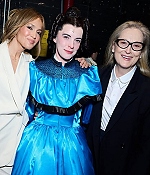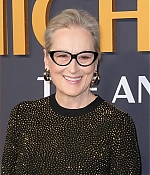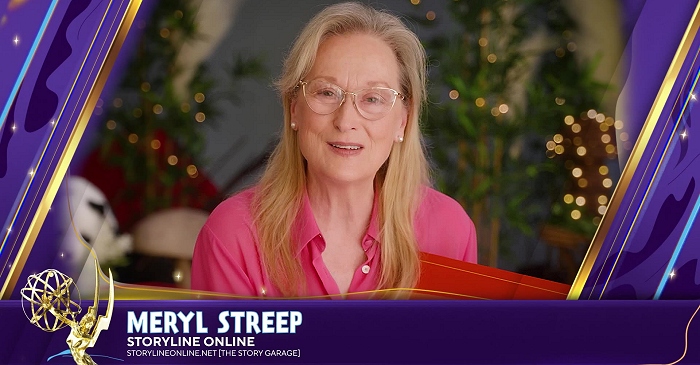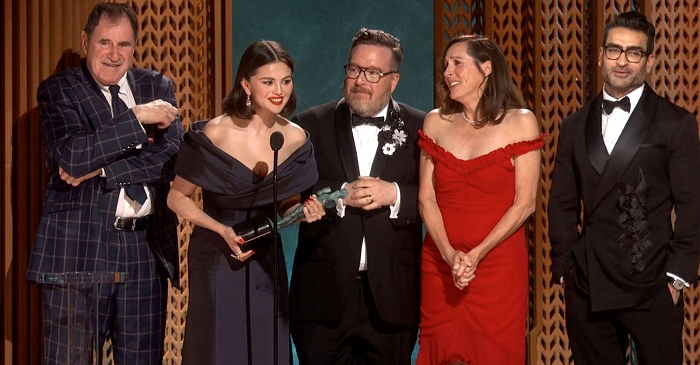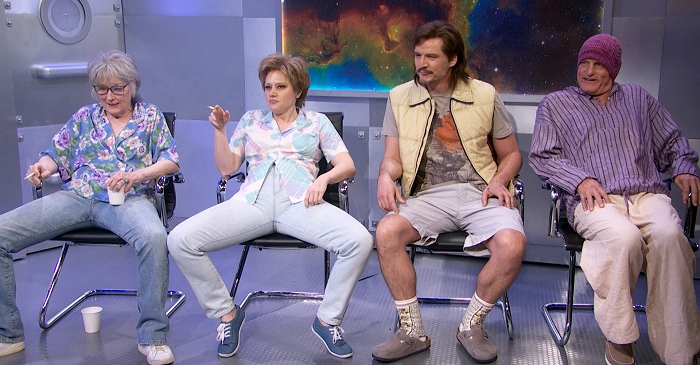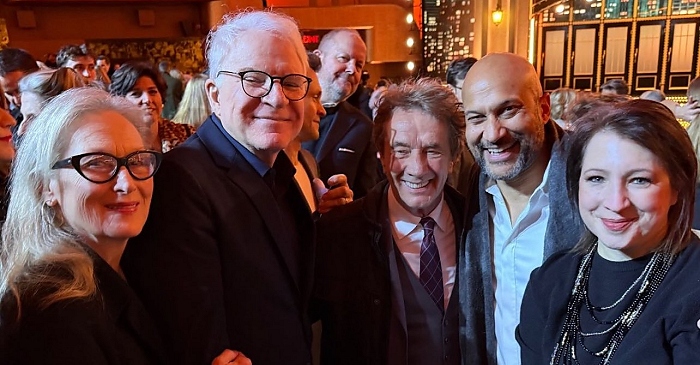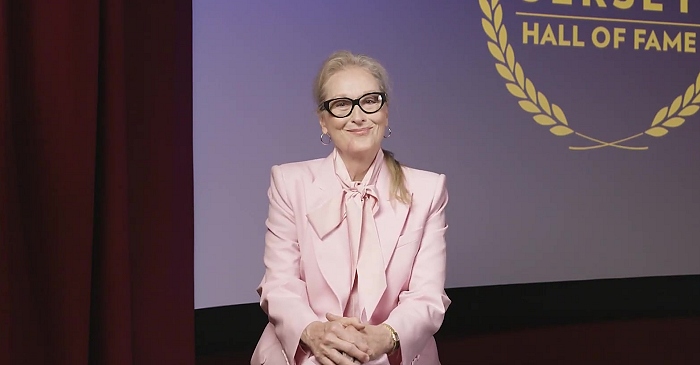|
Simply Streep is your premiere source on Meryl Streep's work on film, television and in the theatre - a career that has won her the praise to be one of the world's greatest working actresses. Created in 1999, we have built an extensive collection to discover Miss Streep's body of work through articles, photos and videos. Enjoy your stay.
|
Celebrating
25 years
of SimplyStreep
|
|
Meryl Streep sings in "Alice in Concert"
The New York Times ·
January 08, 1981
· Written by Frank Rich
|
The is only one wonder in Elizabeth Swados’s musical adaptation of Lewis Carroll, ”Alice in Concert,” and it goes by the name of Meryl Streep. Maybe it ‘s gratuitous to rave about this amazing actress at this late date, but what else is there to do? Certainly it’s more fun to sing Miss Streep’s praises than contemplate Miss Swados’s songs. Besides, one leaves the Public owing this star a considerable debt. Imagine ”Alice” without her, and it’s hard to picture any show at all.
Dressed in blue overalls and a white turtleneck, Miss Streep transforms herself into a dreamy Alice without any notable help from Miss Swados. When the actress falls into the rabbit hole, she seems to take leave of gravity -even though her undulating body never actually takes leave of the floor. There’s a lovely moment a bit later when Miss Streep, waking from a nap, looks into a spotlight to brush her flowing mane of hair. Her eyes are so dewy and her face so pure that she truly appears to have been reborn as a young girl.
Nor does her fascinating display of technique end there. During the course of the evening, Miss Streep is at times a giggly nymphet, a spoiled brat and a lost, teary-eyed waif. Eventually she adds other characters to her repertory while continuing to play Alice. She’s particularly touching as that bittersweet dowager, the White Queen, and she’s at her funniest impersonating Humpty Dumpty. By the simple means of affecting a forlorn, basso profundo voice, Miss Streep can create the wholly improbable illusion that she is fat.
There are other talented people involved with ”Alice” as well. Three members of the otherwise bland supporting cast – Mark-Linn Baker, Richard Cox and Michael Jeter – offer witty impersonations of Carroll’s famous animals when they’re given the chance. Joseph Papp, who took over for Andrei Serban in previews, has staged the show as spunkily as possible, and on occasion Graciela Daniele packs the cramped stage with more giddy choreography than the circumstances merit. (The stage is cramped because Miss Swados’s musicians are unaccountably placed on a platform that reduces the floor space by half.) Arden Fingerhut’s lighting is, as always, kaleidoscopic in its moods. In collaboration with Miss Daniele, this designer transforms ”The Lobster Quadrille” into the only number that fully captures Carroll’s delightful blend of whimsy and romance.
Unfortunately, there are 35 other numbers that pretty much defy levitation. According to the program, Miss Swados has worked on this score for seven years – and that may be the problem. Ostensibly an adaptation of ”Alice in Wonderland” and ”Through the Looking Glass,” this ”Alice” has only the most tenuous connection with its source material: a few lines and garbled incidents here, a few character names and chapter titles there. Has Miss Swados spent so much time working over her songs that she’s forgotten the impulse that inspired them in the first place? Just maybe. This vague evening summons up so little of the letter or spirit of Carroll’s nonsensical tales that you must bring copies of the original texts to the Public just to follow what is going on.
You’re not going to leave the theater humming any melodies, either. Certainly Miss Swados has the right to compose tuneless music, but one must question her refusal to match her score to the dramatic material it’s supposed to serve. Why does Alice grow tall to a calypso beat? Why is the mad tea party an effete pastiche of a country-western hoedown? Why is a song about the cheshire cat’s smile batted out angrily on household utensils? Why is ”Jabberwocky” a quasi-African-Oriental tribal ritual? In most cases the music mutilates Carroll ‘s fanciful inventions – or simply drowns them out. Yet Miss Swados has failed to find a coherent point-of-view of her own that might fill the resulting vacuum.
More puzzling still, some of the music has a hectoring tone, as if Miss Swados were writing again about teenage runaways. Lewis Carroll is nothing if not funny, but there are no laughs here beyond those provided by the antics of Miss Streep. The author’s few outright attempts at gag-making have little to do with ”Alice in Wonderland,” but are instead showbiz-oriented references to a television cat food commercial, the folk singer Joni Mitchell and Borscht Belt comics.
At least Miss Streep, God bless her, insists on going her own merry way. Yet one still must wonder why she has devoted so much energy to this show, dating back to its original workshop presentation two years ago. Maybe, like Carroll’s heroine, this actress took a drink from a mysterious bottle labeled ”Drink Me” and then, quite unwittingly, lost her head.

